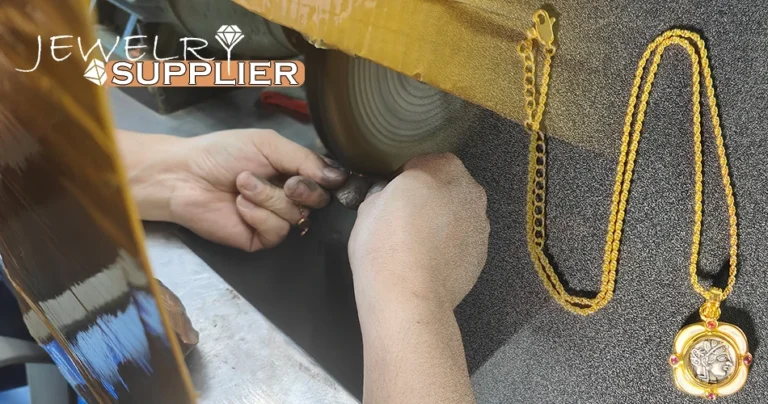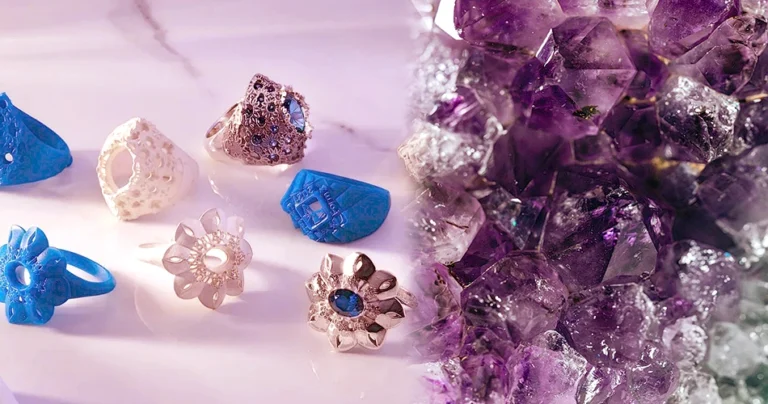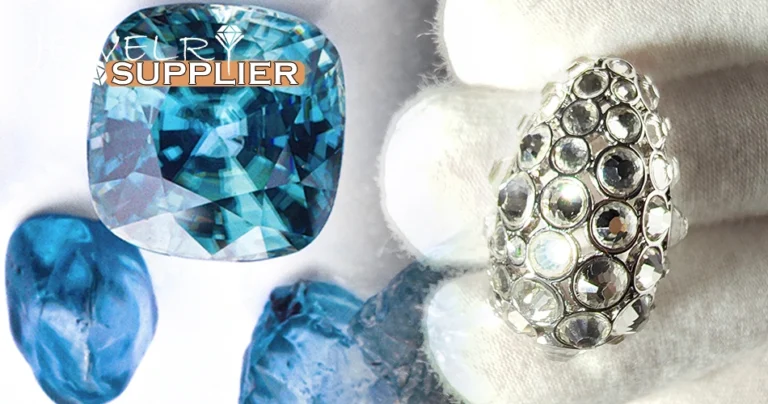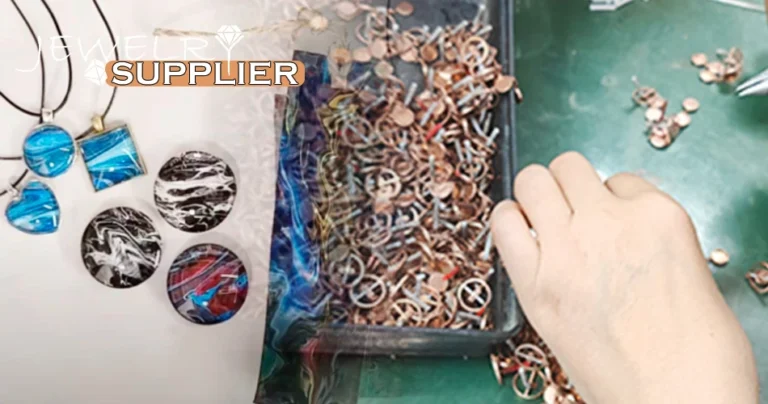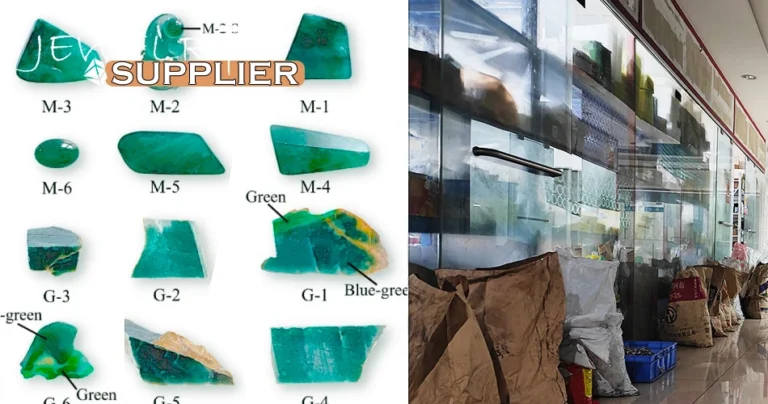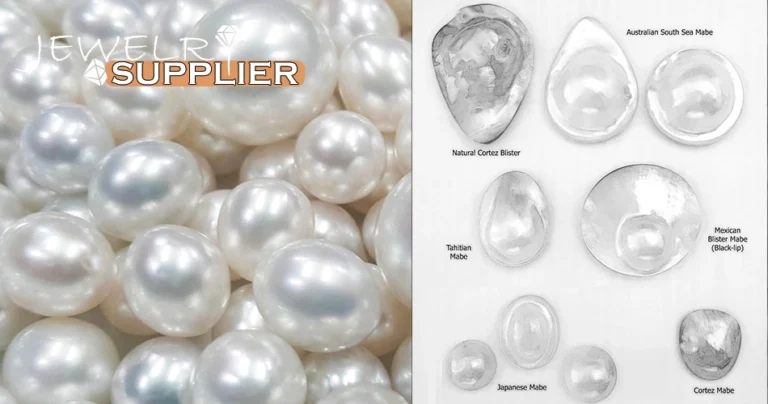The Inlay Technique of Jewelry
The inlay process in jewelry is a highly technical skill that requires precision and complexity. It emphasizes design texture and exquisite craftsmanship. Through inlaying, jewelry can highlight the material characteristics of its shape. The combination and setting of multiple materials enhance the fashionability and decorative art aesthetic of the jewelry. The jade inlay technique has a long history and showcases the warm texture of jade. Through exquisite metal craftsmanship, each piece of inlaid jewelry becomes a combination of art.
Agate, a semi-precious stone with rich colors and unique textures, has been jewelry supplier used for various jewelry and decorations through inlay techniques since the time of pharaohs in ancient Egypt and nobles in ancient Greece and Rome. The modern agate inlay technique retains the essence of traditional craftsmanship while incorporating contemporary design elements, resulting in a work that is both artistic and modern.
Crystal, known for its clear and transparent qualities, is a favorite in inlay craftsmanship
The inlay process for crystal jewelry involves fixing and contrasting the metal to enhance the luster and fire of the crystal. Designers choose the most suitable inlay method based on the shape, size, and overall design of the crystal to ensure the jewelry is both beautiful and durable. Zircon, a widely used material in the jewelry industry, has an equally important inlay process.
Both natural and synthetic zircon can display a sparkling effect similar to diamonds through exquisite inlay techniques. The inlay technology for hardware jewelry includes gemstone inlay techniques for metal materials such as gold, silver, and copper. This craftsmanship requires not only exquisite skills but also a deep understanding of the characteristics of various materials to ensure the beauty and durability of the jewelry. Pearls, treasures of the ocean, require special attention to protect their surface and avoid damage during the inlay process due to their unique luster and natural beauty.
Acrylic inlay technology has become a favorite in modern jewelry fashion due to its unique advantages, such as transparency, lightweight, ease of processing, rich color, weather resistance, and environmental protection. Different inlay techniques have specific advantages and limitations, and the choice depends on the specific design requirements and wearing occasions. Whether it’s traditional jade, agate, crystal, and pearl, or modern zircon, acrylic, and hardware, each material can shine with its unique charm through exquisite inlay craftsmanship.
The Inlay Technique of Jade Jewelry
Claw Inlay: This method involves fixing jade with metal claws, exposing most of the jade’s surface to showcase its beautiful colors and textures. However, metal claws may become fragile due to wear and tear, which can affect the safety of the jade.
Embedding: This refers to completely or partially wrapping the edges of jade with metal, effectively protecting it from external impacts. This method provides better protection and is suitable for daily wear.
Slot Inlay: Slot inlay involves embedding jade into a pre-prepared metal slot and then securing it with metal. This method is usually used to arrange multiple jade stones or small stones, making it suitable for designs that require multiple jade stones, such as bracelets or necklaces. However, it may affect the continuity between the jade stones.
Micro Inlay: Micro inlay is a technique of tightly arranging many small jade stones together and fixing them with metal dots, creating visual effects. However, the process is complex, and cleaning and maintenance can be relatively difficult.
Glue Inlay: Glue inlay involves using special jewelry glue to attach jade to metal. This method is suitable for lightweight designs and allows for easy and fast operation, though it is not as sturdy as other methods, and long-term wear may cause the jade to fall off.
Etching Process: This relatively special inlay technique involves carving the surface of jade and then embedding other materials, such as gold or silver, into the carved grooves to create a unique decorative effect. This technique can produce complex and artistic designs, but due to its complexity, the cost can be relatively high.
Agate Jewelry Inlay Technique
Making a Base: Based on the shape and size of the agate, a corresponding metal base is created.
Inlay: The processed agate is inlaid into the base using methods such as claw inlay, wrapping inlay, and groove inlay.
Claw Inlay: Metal claws are used to fix the agate.
Embedding: The edges of the agate are wrapped in a metal frame.
Slot Inlay: The agate is placed into a pre-prepared metal slot.
Pinching Inlay: This delicate technique involves finely pinching metal wires to ensure uniform length and thickness, then combining the metal wires with agate to create exquisite patterns and designs.
Concealed Inlay: Developed by Van Cleef & Arpels, this technique uses gold tracks to inlay gemstones, creating a smooth and seamless surface that gives the work a velvet-like shiny luster. This technology requires extremely high precision and professional skills.
Etching Technique: This process involves dyeing and etching agate to create various patterns and designs, increasing its artistic and decorative value.
The Inlay Technique of Crystal Jewelry
Claw Inlay: This is the most commonly used method for inlaying crystals, where metal claws fix the crystal in place, fully displaying its various facets and enhancing its luster. Claw inlay is widely applicable for any crystal material.
Encapsulation: This technique involves surrounding the crystal with metal edges to enhance the beauty and protective appearance of the jewelry. Encapsulation is suitable for larger or uniquely shaped crystals, ensuring they are not easily detached.
Slot Inlay: This method involves continuously inlaying crystals into metal slots, making it ideal for creating crystal bracelets or necklaces. Slot inlay allows crystals to be arranged closely together, forming smooth lines and a unified visual effect.
Nail Inlay: In this technique, crystals are fixed in place with small nails by making tiny holes in the metal. This is suitable for inlaying small crystal particles and can create dense, continuous decorative effects.
Hidden Inlay: This technique involves creating slots on a metal base, embedding the crystal into the groove, and covering it so that the crystal is flush with the metal surface. This protects the crystal’s surface while providing a smooth appearance.
Bead Border Inlay: This method embeds a circle of small beads or metal beads around a crystal to form a decorative border. Bead edging not only enhances the decorative effect of the crystal but also provides additional protection.
Combination Inlay: This approach combines multiple inlay techniques, such as claw inlay and encapsulation, within the same piece of jewelry to create a unique design and decorative effect.
Laser Welding: Using laser technology, this technique precisely welds metal parts and crystals together, making it suitable for complex or delicate jewelry designs.
Metal Weaving: This involves weaving metal wires into a mesh or other pattern by hand or machine, then combining them with crystals to create unique jewelry designs.
Metal Stamping: This process uses a stamping machine to press metal sheets into specific shapes or patterns, which can be used to create various jewelry components and then combined with crystals.
Metal Etching: Fine patterns are carved on the surface of the metal to add decorative and detailed elements to the jewelry, which can then be combined with crystals.
Group Inlay: This method involves inlaying small crystal particles and can be divided into various inlay techniques, such as groove inlay, nail inlay, tooth nail inlay, and aperture inlay.
Zircon Jewelry Inlay Technique
Claw Inlay: This technique uses metal claws to fix zircon onto a bracket, allowing more light to enter and increasing its brilliance. It maximizes the display of zircon’s brightness and fire color and is suitable for jewelry that highlights a single zircon design.
Encapsulation: In this method, the waist of the zircon is completely wrapped within a metal frame, providing a secure hold that prevents accidental dropping. It is ideal for daily wear.
Slot Inlay: Zircons are arranged in a metal slot and secured with metal edges, making it suitable for designs featuring tightly arranged zircons, such as side decorations on rings. Compared to claw inlay, this method may reduce the visible area of the zircon.
Nail Inlay: This technique tightly arranges many small zircons, fixing them with metal to create continuous sparkling effects. It is suitable for designs embedding multiple small zircons.
Hardware Jewelry Inlay Process
Hardware typically refers to metal materials such as gold, silver, copper, iron, and tin. In jewelry production, the most common materials are gold, silver, copper, and their alloys. Despite material differences, the inlay processes are quite similar.
Claw Inlay: This method uses thin metal claws to fix gemstones, maximizing their surface area and enhancing light refraction and visual effects.
Encapsulation: Metal edges wrap around a gemstone to provide additional protection, making it suitable for larger or valuable gemstones.
Groove Inlay (Track Inlay): This involves continuously inlaying gemstones into metal grooves to create straight or curved lines, often used for bracelets and necklaces.
Nail Inlay: Small holes are made in the metal to embed gemstones, ensuring the stones are flush with the metal surface. This is suitable for small gemstones.
Hidden Inlay (Concealed Inlay or Gypsy Inlay): Gemstones are embedded in metal with the metal surface covering the top of the gemstone, making it flush and protecting the stone while providing a smooth appearance.
Bead Edge Inlay: A circle of small beads or metal beads is embedded around a gemstone, creating a decorative border that enhances the three-dimensional aspect and detail of the jewelry.
Laser Welding: This technique employs lasers to precisely weld metal parts together, making it suitable for complex or delicate jewelry designs.
Metal Weaving: Metal wires are woven into a mesh or other pattern by hand or machine, then used as part of the jewelry.
Metal Stamping: A stamping machine is used to press metal sheets into specific shapes or patterns, which can be used to create various jewelry components.
Metal Etching: Fine patterns are carved on the metal’s surface to enhance decorative and detailed aspects of the jewelry.
Metal Plating: This involves covering a metal surface with a layer of other metals, such as gold, silver, or platinum, to alter its appearance or increase durability.
Metal Inlay: One metal is embedded into another to form decorative patterns or textures.
Filial Inlay: Metal wires are manually bent into various patterns and then welded onto jewelry to create exquisite decorative effects.
Hollow Inlay: Holes are carved in the metal, and gemstones or other decorations are inlaid into these holes to create a unique visual effect.
Pearl Jewelry Inlay Technique
Hole Inlay: This process involves making a small hole in a pearl and then fixing it to a metal base through the hole. This method is suitable for most pearl types and can fully showcase their beauty, maximizing the display of pearl luster. However, punching holes can affect the integrity of pearls, especially smaller or thinner ones.
Inlay: This technique places pearls inside a metal casing. The metal covers are usually intricately designed, sturdy, and protect pearls from damage, but they do cover some surface area, reducing the display of glossiness.
Inlaying: This involves wrapping some or all of the edges of the pearls within a metal frame. It provides good protection and is suitable for daily wear, but the many metallic parts can affect the transparency and visual effect of the pearls.
Dragon Inlay: This method places pearls in a hollow metal frame, preventing direct damage to the pearls. It’s suitable for those who prefer not to punch holes in their pearls, making it ideal for high-value specimens. However, it may not be suitable for all pearl designs.
Winding: This manual technique uses metal wire to wrap and secure pearls, commonly applied to irregularly shaped pearls, like Baroque pearls. It offers an artistic touch and is suitable for personalized designs, though regular checks are needed to ensure the metal wire remains tight.
Inlaying: In this method, pearls are fixed onto a bracket using metal needles after holes are punched. This technique is suitable for round or nearly round pearls but requires punching, which can easily affect the overall structure of the pearl.


